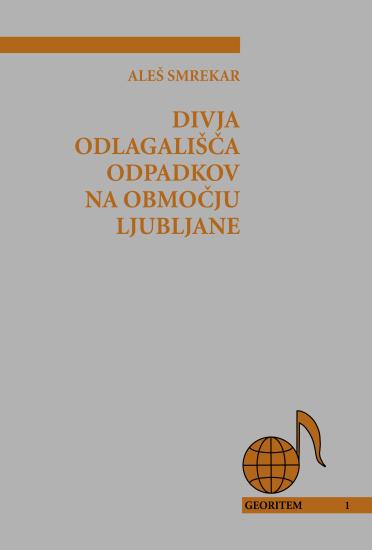
Author:
Aleš Smrekar
Year:
2007
Studies to date on illegal waste dumps in the Ljubljana Plain (Ljubljansko polje), the Iška Alluvial Fan (Iški vršaj), and areas with local water sources in the City of Ljubljana have demonstrated that there are great amounts of waste in areas of importance to the Slovenian capital’s water supply. In particular, illegal dumps located in areas where groundwater flows towards pumping stations and where the Sava and Iška rivers flow into the groundwater present a considerable threat to drinking water quality. In addition, shallow groundwater levels and gravel pits increase the vulnerability of the environment even more.
In the water protection areas discussed, 1,586 illegal waste dumps were found and studied: 1,445 in the Ljubljana Plain, 104 in the Iška Alluvial Fan, and 37 in areas with local water sources. There are 151 dumps in the Jarše Gravel Bank (Jarški prod) on the left bank of the Sava, which is the most problematic area. Their total area is 128,056 m2 and their total waste volume is 220,071 m3. The size of an average dump is 80.7 m2 and, on average, it contains 138.8 m3 of waste material. There are considerable differences between individual areas discussed, and these are especially evident in areas with local water sources that contain the smallest dumps in terms of average size (i.e., 47.5 m2) and the largest in terms of average volume (i.e., 185.1 m3). In addition, 100 gravel pits, 58 signs, and 57 barriers were recorded in the entire area studied.
Two thirds (66.7%) of waste comes from construction material, followed by primary waste, which accounts for 18.7%. Municipal waste accounts for 11.2%, and industrial waste for 2.2%, whereas the percentage of medical and veterinary waste is negligible – that is, only 0.2%. Of the total waste, 13.5% is hazardous, representing nearly 30,000 m3. Of this, construction waste accounts for over eighty percent (84.6%), and industrial waste for 9.9%.
More than a third (35.6%) of illegal dumps remain fully active; and just under one third represent active and inactive dumps, respectively, which indicates that waste influx is still extremely active.
Waste inspection and analyses of the samples taken indicate that the amount of dangerous substances is not great. However, these still represent a certain threat to groundwater, especially in terms of organic pollution. On the basis of groundwater monitoring it can be also concluded that the amount of dangerous substances leaching from illegal waste dumps does not reach measurable levels. These findings indicate that simple and price-effective remediation of the degraded area could be carried out and new value could be given to this now devalued area.
Gradually, all illegal waste dumps must be cleaned up; however, the large amount of waste makes it unrealistic to expect this to be achieved all at once. Carefully designed methodology was used to define a priority list for illegal waste dump cleanup. The first priority group includes 77 dumps, the second 260, the third 538, the fourth 522, and the fifth 189.
-
Author
-
Publishing House:
Založba ZRC
-
Publisher
-
ISBN
978-961-254-008-1
-
Year
2007
-
Series
Georitem 1
Language(s)
-
Specifications
paperback 14 × 21 cm 128 pages
-
E-publications
05. 12. 2019
-
Permalink